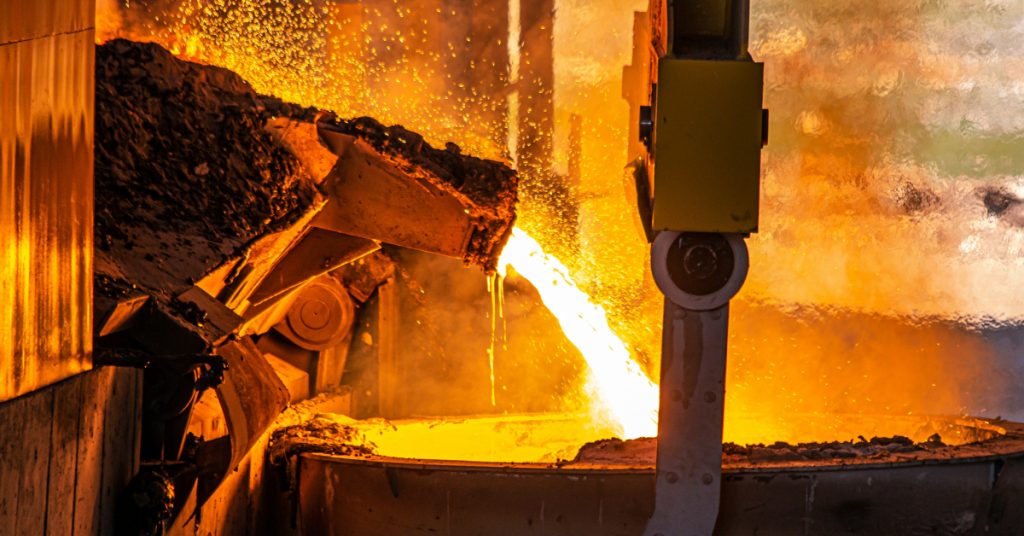By Africa Mining & Engineering Review Staff Writer
A Major Setback for South Africa’s Steel Industry
ArcelorMittal South Africa Ltd. (AMSA) and the Industrial Development Corporation (IDC) have officially ended their exclusive negotiations without reaching an agreement.
The breakdown of these discussions marks a critical moment for South Africa’s steel industry, a sector that underpins the country’s mining, construction, and manufacturing supply chains.
Despite several months of engagement, both parties confirmed that the negotiations did not result in a binding deal. The IDC had reportedly made an offer of around ZAR 8.5 billion for AMSA’s South African operations, but the two sides could not agree on valuation terms or future operational commitments.
Background: Plant Closures and Financial Pressures
These negotiations began in late 2023, following AMSA’s announcement of plans to close two major steel plants that had long served as key suppliers to the country’s industrial and mining sectors.
The Newcastle plant, once a cornerstone of South Africa’s long-steel production, has already been closed, along with its associated iron-ore mine. Meanwhile, the Vanderbijlpark flat-steel operation continues to run, albeit under significant operational and financial strain.
These closures have had a ripple effect across industries, leading to reduced domestic steel supply and increased reliance on imports, further impacting local manufacturing competitiveness.
Policy Tensions and Labour Disputes
Relations between ArcelorMittal South Africa and the government have grown increasingly tense, with key disagreements surrounding electricity tariffs, scrap-steel imports, and industrial policy frameworks.
AMSA has criticised some government policies, suggesting they have created an uneven playing field and limited the company’s ability to remain competitive.
At the same time, AMSA is appealing a Labour Court ruling ordering the reinstatement of thousands of workers retrenched after the Newcastle closure — a decision that could further affect its financial recovery.
Implications for the Mining and Engineering Sectors
The collapse of talks between AMSA and the IDC introduces renewed uncertainty for South Africa’s mining and manufacturing industries, which rely heavily on a stable domestic steel supply.
Steel is a critical input for mine construction, shaft reinforcement, ore transport systems, and mineral-processing equipment. If instability in local supply continues, mining operators may be forced to import more steel, raising costs and reducing local value addition.
For the engineering sector, reduced steel output could impact infrastructure projects and the manufacturing of heavy industrial equipment. The situation underscores the interconnectedness between mining, engineering, and metallurgical industries in South Africa’s industrial ecosystem.
What Lies Ahead
Although exclusive talks have ended, both AMSA and the IDC have indicated that discussions on alternative solutions may continue. Analysts believe new partnership models, possibly involving private equity or state-backed investment, could still emerge to stabilise domestic steel production.
Key areas to watch include:
- Potential reopening or repurposing of idled iron-ore and steel facilities.
- The fate of the Vereeniging plant and related operations.
- Government adjustments to electricity pricing and scrap-steel import policies.
- The outcome of labour appeals and workforce restructuring plans.
A Pivotal Moment for South Africa’s Industrial Future
The failure to reach a deal between ArcelorMittal South Africa and the IDC highlights the complex challenges facing the nation’s steel industry, from rising energy costs to global price pressures and regulatory hurdles.
For Africa’s mining and engineering community, this development reinforces the importance of industrial collaboration, infrastructure investment, and policy alignment to secure the continent’s manufacturing and resource-processing base.
South Africa’s ability to stabilise its steel sector will play a defining role in shaping the competitiveness of its mining, engineering, and construction industries in the decade ahead.







